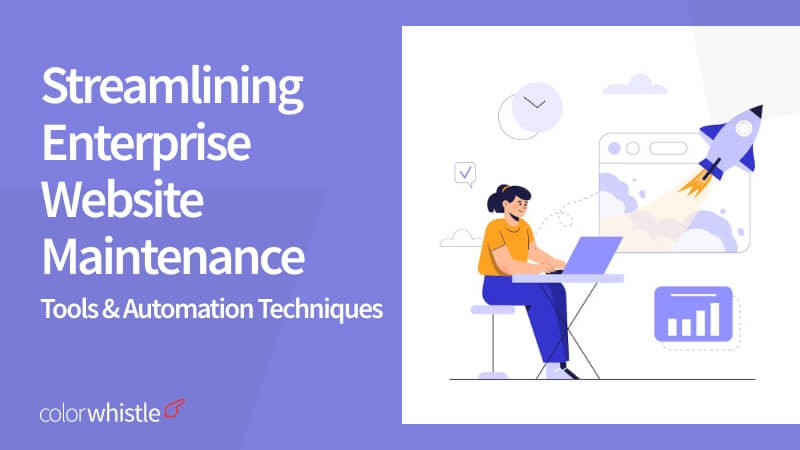Instead of starting the usual way, let us begin with a real incident, maybe that could help you understand more.
In July 2021, the Fastly CDN (Content Delivery Network) experienced a global outage that impacted numerous high-profile websites and online services. Fastly provides edge cloud services, including content delivery, to speed up website performance and improve user experience. However, a configuration error during a routine software update caused a major disruption.
Popular websites like Reddit, Amazon, Spotify, and The New York Times were among those affected by the outage. These sites experienced downtime, rendering them inaccessible to users for several hours. The incident not only resulted in significant financial losses but also damaged the reputation of the affected organizations.

The incident highlighted the importance of regular updates, thorough testing, and monitoring to prevent such widespread disruptions. It showcased the necessity of staying vigilant, conducting regular audits, and proactively addressing potential vulnerabilities to ensure uninterrupted service and a positive user experience.
This real incident underscores the significance of website maintenance for enterprises. It demonstrates how even a momentary disruption can have far-reaching consequences, impacting revenue, customer trust, and brand perception.
Don’t you think the above incident could have been avoided if the right tools and automation techniques were incorporated for regular audits, updates, and regular maintenance ?
And of course, the answer is YES!!!
Tools and automation techniques are crucial for streamlining enterprise website maintenance which would help in the success of any enterprise. A well-maintained website not only attracts and engages customers but also reflects the professionalism and reliability of the business. However, manual website maintenance can be time-consuming, error-prone, and resource-intensive. That’s where tools and automation techniques come into play.
By leveraging the right tools and implementing automation techniques, enterprises can streamline their website maintenance processes, reduce manual effort, minimize errors, and ensure optimal performance. In this blog, we will explore a comprehensive range of tools and automation techniques that can help enterprises efficiently manage their website maintenance tasks.
As a Web development company & digital agency, we have invested time in exploring the tools and techniques that would be helpful for enterprise website maintenance. After several discussions with our developers, we have compiled this informative piece. Delve into the details and discover the importance of website maintenance.
Enjoy your reading!
Tools and Automation Techniques for Streamlining Enterprise Website Maintenance
Let us explore the tools and techniques for streamlining enterprise website maintenance,
Content Management System (CMS)
- A content management system is a fundamental tool for simplifying website maintenance tasks.
- Popular CMS platforms like WordPress, Drupal, and Joomla provide user-friendly interfaces that allow non-technical users to create, edit, and publish content without relying on developers.
- CMS platforms offer features such as WYSIWYG editors, media management, and version control, making content updates and additions a breeze.
- With robust access controls and permissions, CMS platforms enable multiple team members to collaborate on content creation and maintenance.
Version Control Systems (VCS)
- Version control systems like Git revolutionize website development and maintenance processes.
- VCS tools provide a centralized repository to manage the website codebase, track changes, and facilitate collaboration among developers.
- VCS ensures that previous versions of code are preserved, making it easy to roll back changes if necessary. Additionally, VCS tools facilitate code reviews, making it easier to maintain code quality and detect errors early in the development process.
Automated Testing
- Automated testing is a critical component of efficient website maintenance.
- Using testing frameworks like Selenium or Cypress, enterprises can automate the testing process, ensuring consistent quality and functionality.
- Automated tests can be scheduled to run periodically or triggered by specific events, allowing continuous monitoring of critical functionalities.
- The automated tests can identify bugs, broken links, or compatibility issues across different devices and browsers. Automated testing saves time and effort, enabling developers to focus on more complex tasks while minimizing the risk of human errors.
Website Monitoring and Analytics
- Website monitoring and analytics tools provide valuable insights into website performance, uptime, and user behavior.
- Platforms like Google Analytics, New Relic, or Pingdom offer real-time monitoring, helping enterprises identify potential issues and optimize their websites for better user experience.
- By monitoring metrics such as page load times, bounce rates, and conversion rates, enterprises can make data-driven decisions to improve website performance.
- These tools also provide alerts and notifications for downtime or performance degradation, allowing teams to respond promptly and minimize disruptions.
Task and Project Management Tools
- Efficient task and project management are essential for streamlined website maintenance.
- Project management platforms like Jira, Asana, or Trello enable teams to track and assign tasks, set deadlines, and communicate progress effectively.
- These tools offer features like task prioritization, progress tracking, and collaboration, ensuring everyone is aware of their responsibilities and deadlines.
- By centralizing communication and task management, enterprises can improve productivity, optimize resource allocation, and streamline website maintenance workflows.
Continuous Integration/Continuous Deployment (CI/CD)
- These pipelines automate the process of deploying website changes and updates, reducing manual effort and minimizing the risk of errors.
- Tools like Jenkins, Travis CI, or CircleCI integrate with version control systems to automate building, testing, and deploying code changes.
- With automated testing, code quality checks, and deployment pipelines, enterprises can ensure that new changes are implemented seamlessly and reliably.
- CI/CD pipelines also help in enabling rapid iteration and deployment, allowing enterprises to stay agile and respond quickly to market demands.
Website Performance Optimization
- Optimizing website performance is crucial for delivering a seamless user experience
- Tools like Google PageSpeed Insights, GTmetrix, or WebPageTest analyze website performance and provide recommendations for improvement
- These tools assess factors such as page load times, image sizes, and code efficiency, helping enterprises identify areas for optimization
- By implementing their recommendations, enterprises can enhance website speed, reduce bounce rates, and improve search engine rankings
- Techniques such as caching, minification, and content delivery networks (CDNs) can also be employed to optimize website performance further
Security Scanning and Vulnerability Testing
- Website security is of paramount importance for enterprises.
- Regular scanning for security vulnerabilities using tools like Acunetix, Nessus, or OWASP ZAP helps identify potential weaknesses and ensures proactive security measures
- These tools assess the website’s configuration, plugins, and code for vulnerabilities, providing detailed reports and recommendations for remediation
- By addressing security vulnerabilities promptly, enterprises can safeguard customer data, protect their reputation, and comply with industry regulations
Content Delivery Network (CDN)
- Implementing a CDN improves website performance and reduces server load, especially for enterprises with a global audience
- CDNs like Cloudflare, Akamai, or Amazon CloudFront cache static website content across multiple servers worldwide
- By serving content from the nearest server to the user, CDNs reduce latency and improve page loading times
- CDNs also offer security features like DDoS protection and SSL encryption, enhancing website security
- Enterprises can integrate CDNs with CMS platforms or use caching plugins to leverage the benefits of content delivery networks
Automated Backup and Recovery
- Regularly backing up website files and databases is essential to prevent data loss and ensure quick recovery in case of website failure or cyber-attacks
- Automated backup tools like UpdraftPlus, BackWPup, or VaultPress (for WordPress) simplify the backup and recovery process
- These tools enable scheduled backups, incremental backups, and off-site storage options, ensuring data integrity and reducing downtime
- Automated backups provide peace of mind and allow enterprises to restore their websites to a previous working state efficiently.
Stabilize and Keep Your Enterprise Growth Inclined with Regular Website Maintenance
In the fast-paced digital landscape, the significance of website maintenance for enterprises is undeniable. By regularly updating content, optimizing performance, and ensuring robust security measures, organizations can deliver seamless user experiences, establish trust with their audience, and stay ahead of the competition.
Neglecting website maintenance risks poor user experiences, compromised security, and missed business opportunities. Embracing the importance of website maintenance as an ongoing priority allows enterprises to thrive in the dynamic digital ecosystem and make a lasting impact in the minds of their target audience.
For more interesting and professional website maintenance tips as well as digital marketing services, you can contact ColorWhistle by sending us a message or call us at +1 (919) 234-5140, we’ll get back to you at the earliest. We provide services tailored to your requirements that suit your business.
What’s Next?
Now that you’ve had the chance to explore our blog, it’s time to take the next step and see what opportunities await!





